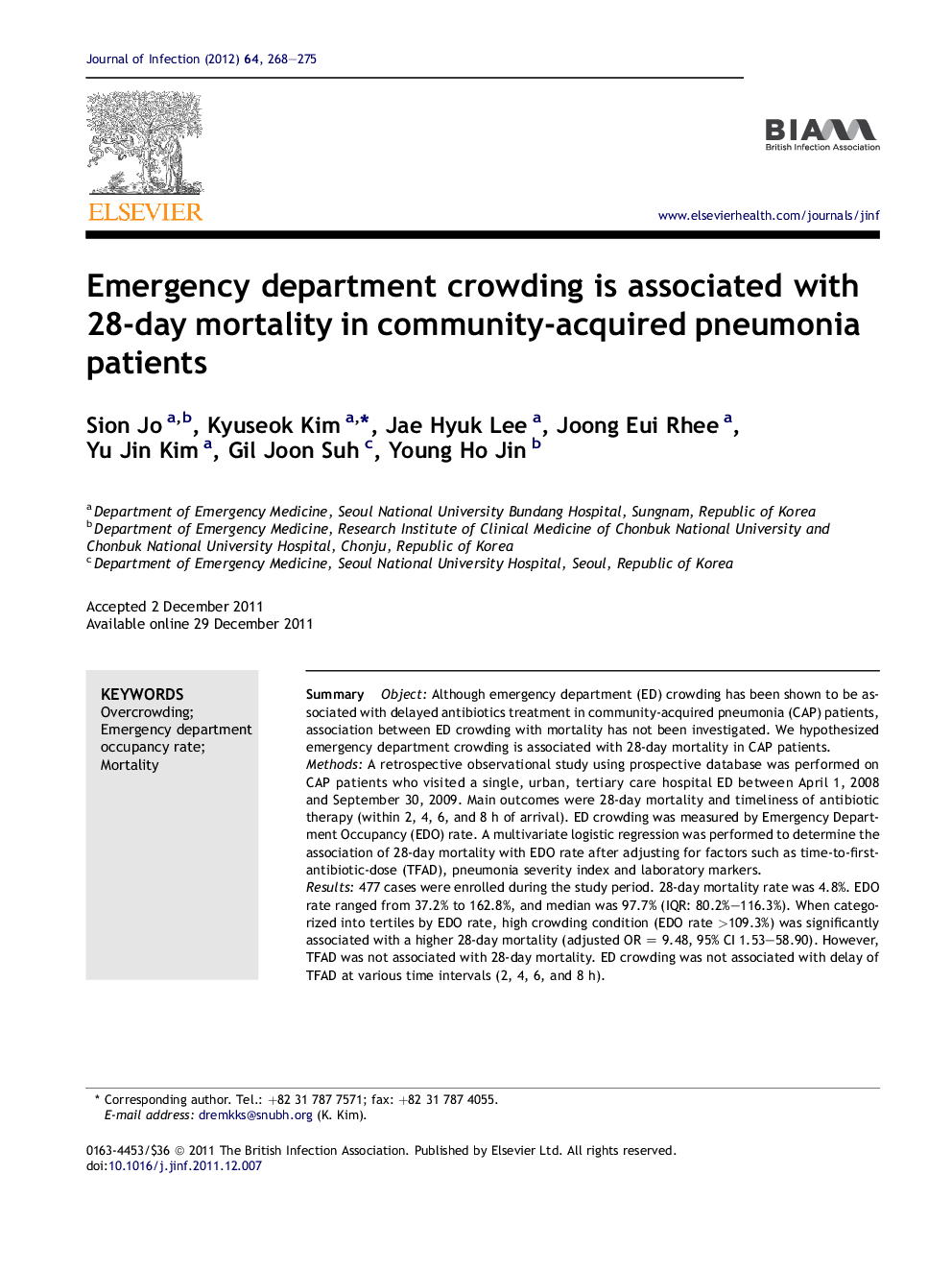| Article ID | Journal | Published Year | Pages | File Type |
|---|---|---|---|---|
| 3375022 | Journal of Infection | 2012 | 8 Pages |
SummaryObjectAlthough emergency department (ED) crowding has been shown to be associated with delayed antibiotics treatment in community-acquired pneumonia (CAP) patients, association between ED crowding with mortality has not been investigated. We hypothesized emergency department crowding is associated with 28-day mortality in CAP patients.MethodsA retrospective observational study using prospective database was performed on CAP patients who visited a single, urban, tertiary care hospital ED between April 1, 2008 and September 30, 2009. Main outcomes were 28-day mortality and timeliness of antibiotic therapy (within 2, 4, 6, and 8 h of arrival). ED crowding was measured by Emergency Department Occupancy (EDO) rate. A multivariate logistic regression was performed to determine the association of 28-day mortality with EDO rate after adjusting for factors such as time-to-first-antibiotic-dose (TFAD), pneumonia severity index and laboratory markers.Results477 cases were enrolled during the study period. 28-day mortality rate was 4.8%. EDO rate ranged from 37.2% to 162.8%, and median was 97.7% (IQR: 80.2%–116.3%). When categorized into tertiles by EDO rate, high crowding condition (EDO rate >109.3%) was significantly associated with a higher 28-day mortality (adjusted OR = 9.48, 95% CI 1.53–58.90). However, TFAD was not associated with 28-day mortality. ED crowding was not associated with delay of TFAD at various time intervals (2, 4, 6, and 8 h).ConclusionsED crowding measured by EDO rate was associated with higher 28-day mortality in CAP patients after adjusting TFAD, pneumonia severity index (PSI), and laboratory markers, although there was no association between ED crowding and TFAD.
